- Home
- Jeremy Robinson
Prime Page 2
Prime Read online
Page 2
“Yes,” the general went on. “Perhaps you will teach me how to play it.”
“I am no musician,” al-Tusi replied, staring at the urghan, surreptitiously searching the surrounding tabletop for the Book. “And I have the Khan’s business to attend to here. I must try to preserve what little of the library you have not already destroyed.”
With what he hoped was an air of casual disdain, al-Tusi turned away and started gathering scrolls and codices from the tables. He purposely ignored the parchment on the table with the urghan, hoping that Guo would lose interest, or more accurately, that he would be deceived by al-Tusi’s apparent disinterest.
“I leave you to your task,” Guo said, after a long silence. He strode toward the exit, pausing at the threshold. “I think I would like that instrument, though. I’ll send some men to collect it. Please make sure nothing…untoward…happens to it.”
As soon as the general was gone, al-Tusi let out the breath he had been holding, and he hastened back to the table. With barely restrained urgency, he began sorting through the papers arranged around the urghan.
Where is it? It has to be here.
His fingers lit upon the parchment. He was surprised at the memories a simple touch evoked, but he tucked the nostalgia away, along with the roll, which disappeared into the folds of his robes.
Let Guo have the urghan; without this, he will never begin to grasp its true importance.
But securing the parchment brought him scant comfort. The Book was nowhere to be found.
He searched every document in the room, and when he was done, he searched the other observatories and reading rooms. Over the days that followed, he would inspect every scrap of paper or parchment that Guo’s soldiers had not destroyed—setting aside more than four hundred thousand unique documents—but the one book he sought most continued to elude to him.
There was a simple explanation, of course. The Book, that singular, irreplaceable chronicle of the experiments conducted at the Prime…the tome that, quite literally, contained within its pages, the secrets of life itself…was gone.
Destroyed.
Pitched into the Tigris like so much waste.
At first, al-Tusi was inconsolable, but as the days and weeks passed, he realized that perhaps his father had been right about such things. Allah had seen fit to remove the knowledge from the world.
The Caliph had tried to use the discovery as a weapon of war. No doubt, men like Hulagu and Guo would have attempted to do the same, and if they had somehow succeeded…
Al-Tusi didn’t want to contemplate what that might mean.
Perhaps it was best that the Book was gone.
Inshallah
Yunnan Province, China, 2005
Katherine Geller stared at the endless emerald-green tea plants covering the distant hills, with a mixture of nostalgia and contempt. She was a coffee drinker and had been since her late teens, imbibing mug after mug of the beverage, sweet but without milk, as she studied and crammed to get through her university courses, and subsequently her PhD in Biology, along with Masters degrees in molecular biology, organic chemistry and epidemiology, respectively. Coffee was a drink she associated with ambition and the drive to succeed; tea just made her think of Richard.
They’d been good for each other, even if they hadn’t been terribly successful as a couple. Richard had also been driven to succeed, and with the nearly limitless resources of his inheritance, his only limiting factor was the scope of his vision. She had helped him articulate his grandiose schemes, and he in turn had opened doors for her that she hadn’t even known existed. They had pushed each other to new heights, competed with and dared each other, and in the end, extended their reach well beyond what either of them had thought possible to grasp. Perhaps because their personalities were so much alike, the intimate relationship that had started it all—which they both recognized from the outset as nothing more than a diversion—had withered on the vine. Not surprisingly, they were both better for it. He had gone on to pursue his ambitions, and she had returned to her true passion: research.
They were still close. His company was discreetly funding her current endeavor. She called every day on the Qualcomm satellite phone he had insisted she take along, but their conversations rarely evoked any kind of emotional response. The sight of the hills covered in tea however, reminded her of the god-awful fresh-cut peppermint tea that he was always trying to get her to drink, and that took her to more intimate places in her mind.
“Dr. Geller!”
Katherine shook her head to clear away the memories of her former lover. She turned toward the person shouting her name. Bradley Stafford, one of her graduate students and her chief research assistant, was hastening in her direction, waving a sheet of paper she knew would contain the raw data from the latest batch of samples. If Stafford’s enthusiasm was any indication, the news was good. She took the report with a patient smile, and gave it a cursory once-over.
Good news indeed—excellent in fact.
“We found him, didn’t we?” asked Stafford. “Patient Zero.”
Katherine cast him a reproving glance. “We’re just collecting samples, Brad. We’ve got half a dozen more sites to visit before we can even begin parsing the data.”
Although her statement was accurate, she had a more compelling reason to be hesitant about declaring victory. In a lower voice, she added: “The last thing we need right now is for Han to get all excited and shut us down.”
Dr. Han Li was their official liaison with the Chinese Ministry of Health, or to be more precise, their government-appointed babysitter. Although Katherine’s team nominally had the full support and cooperation of the Ministry, implicit in that agreement was the expectation that they would find nothing to upset the status quo, and certainly nothing that might reinforce the idea that the People’s Republic of China was the birthplace of catastrophic infectious diseases. The Ministry had granted them access to archaeological sites in Yunnan Province only in hopes they might find clues that would lead them elsewhere, perhaps to India or one of the other hypothesized origination sites for the pandemic.
Katherine didn’t want Han to know all the evidence pointed to the unarguable conclusion that the most devastating outbreak in the history of the world had begun right here in Western China.
Bradley wasn’t wrong; they were closing in on Patient Zero—the source of the Black Death.
The Black Death.
The name wasn’t just dramatic hyperbole. The outward symptoms of the plague that had swept across the known world during the fourteenth century were black pustules on the skin and a darkening of the fingernails as the tissue underneath began to necrotize. There was debate about how many had died from the plague, which reached its peak between 1348 and 1350, but it was generally believed that the pandemic had killed half the world’s population. Estimates of the death toll ranged from 75 million to 200 million, making it even deadlier than the Spanish Influenza pandemic of 1918. Katherine imagined that the survivors must have felt like they were living through the tribulation prophesied in the Bible: “Then two shall be in the field; the one shall be taken, and the other left.”
In the big picture of infectious disease, the Black Death was a statistical anomaly—a flash fire that had done a lot of damage in the short term, and then more or less burned itself out.
The strangest thing about the Black Death was that no one was really sure what it was. Common wisdom held that the plague organism was Yersinia pestis—the bacteria responsible for bubonic and pneumonic plague—which had jumped from rodent populations to humans through flea bites. Forensic evidence tied the bacterium to the Black Death, but some historians believed the evidence had been misread. Many of those who contracted the plague lived in climates where transmission by flea bites would have been extremely unlikely. Some scientists—and Katherine was among their number—believed that bubonic plague was coincidental with the actual cause of death, or that the agent responsible was either a unique strain of Yer
sinia or something that worked in tandem with the plague bacterium to enhance its lethality.
Katherine’s team was trying to identify the original source of the pandemic, to find its earliest victims and hopefully to gather samples of DNA from the plague organism that would provide a definitive answer. But unlike viruses, which were really nothing more than chains of protein that could remain dormant for years or even centuries, bacteria were living cells that needed sustenance. When an infected person died, the bacteria in their body died soon after and began to degrade. Sometimes though, traces of bacterial DNA remained in the bones and teeth of victims long dead—traces that could be extracted in the mobile laboratory and sent off for analysis using a satellite Internet connection.
Archaeologists had identified several sites in Asia where the plague had ravaged the population. Entire villages had died and been reclaimed by the earth. It was in these places that Katherine hoped to find Patient Zero—figuratively at least—and to answer two questions: what really was the cause of the Black Death, and why had it appeared, seemingly from nowhere, to nearly wipe out humanity?
She tucked the report under her arm, and with Stafford in tow, she headed for the dig. This particular site, a village that had completely vanished from history during the early fourteenth century, had been a godsend. They had found dozens of remains in small clusters, families that had died in their homes with no one left to bury them. Over the years that followed, seasonal rains had caused the earth to swallow them up where they lay.
Satellite imagery and ground-penetrating radar had given them a rough map of the village, and now strips of engineer’s tape showed where houses had once stood. Several of these had already been excavated, the remains catalogued and removed, but there were a few more at the north end of the village that were still being probed. Katherine walked between these, monitoring the progress of her graduate students and the archaeologists that were working with them, curious to see what new discoveries would be made, but any excitement she might have felt was tempered by the fact that Han Li was hovering nearby.
The Chinese doctor glanced up as she approached. “Dr. Geller, good morning.”
His English was perfect, his manner as quiet and dutiful as always, but Katherine thought she detected a hint of agitation. She wondered if the data in the report had already reached him, but a moment later she realized that his anxiety arose from another source. Several of the team members were working in a new area, outside the map of the village. A new grid of tape was being laid out just beyond the eastern perimeter, and several of the team members were eagerly watching the proceedings.
“What’s going on over there?”
“A discovery has been made,” Han explained.
Katherine pushed past him and approached Bill Smythe, the ground-radar technician who was overseeing the new operation. “Bill, why are you setting up here?”
Smythe made no effort to hide his excitement. “We found something. There’s a large void here, less than two meters down.”
It took a moment for her to process. The void could be a root cellar, not the likeliest of places to find the bodies of plague victims, but if there were remains inside, they would have been shielded from the elements—possibly even mummified. Katherine made an effort to quell her rising enthusiasm. It was better to be surprised with success than with disappointment. “Find a way in. The rest of you have work to do.”
Fifteen minutes later, Smythe reported back that he had found what appeared to be the original entrance to the cellar, a staircase that descended into the void. Laborers used picks and shovels to loosen the earth, and in short order, they created a hole large enough to accommodate a person.
Before descending into the dark space, Katherine donned a HEPA respirator mask and latex gloves—the same bio-safety level-two equipment worn by the team as they dug up the village. It was a precautionary measure, and not just because of the very remote chance of exposure to Yersinia; there were other pathogens—bacteria, viruses, fungal spores—that might be lurking in the sealed environs of the cellar. Thus equipped, she lowered herself into the opening, with Han and Stafford right behind her, the latter recording everything with a handheld video camera equipped with a brilliant LED spotlight.
The descending staircase was uneven, littered with fallen dirt and rock from the excavation, but the space beyond was untouched by time. Katherine directed the beam of her flashlight into the dark depths of the enclosure, and realized immediately that this was no root cellar.
It was a tomb.
The chamber was filled with statuary—dogs, dragons, traditional representations of the Buddha—but there were also elements that, to Katherine’s uneducated eye at least, did not appear to be Chinese in origin. Weapons of war—swords, lances, bows and quivers full of arrows—were prominently displayed, along with life-sized ponies, saddled but riderless. The pieces appeared to have been arranged with feng shui—Chinese geomancy—in mind; the statues formed a maze designed to confound evil spirits who preferred to travel in straight lines.
Han placed a restraining hand on Katherine’s shoulder. “Dr. Geller, I must insist that we withdraw until I can advise the Ministry. This is a significant archaeological find, and has nothing to with your research.”
Katherine gazed back at him. He was right; this tomb had probably been laid long before the outbreak of the plague, and it was unlikely that it would yield any clues relating to their search.
Nevertheless, her curiosity was burning. This was a once in a lifetime opportunity. “We should collect environmental samples as a baseline. And while we’re at it, we can make sure it’s safe for the archaeological team.” She patted his arm in what she hoped was a comforting gesture. “Don’t worry; I won’t touch anything.”
Katherine felt his hand slip away, and realized that he was as eager to plumb the tomb’s depths as she.
They moved through the maze, leaving a trail of footprints in the layer of dust on the earthen floor but otherwise disturbing nothing. The path wound around the outer edge of the enclosure, then spiraled in toward the center where they found a bier, upon which lay an ornate sarcophagus with a terra cotta effigy, presumably the occupant of the funerary container. Han played his light across the familiar looking ideograms inscribed on the sarcophagus, but shook his head signaling incomprehension. Then he turned his beam to an object that had been conspicuously placed alongside the bier.
“This doesn’t belong here.” He reached out and placed a gloved hand on it, as if to confirm its solidity.
Katherine directed her light onto it as well. It didn’t look like a Chinese artifact; the symbols on its exterior were vaguely familiar, but definitely not in the style of the ideograms on the sarcophagus. It showed considerable decay and looked like it might have been damaged prior to its placement, so a positive determination of its purpose was impossible. Like the identity of the tomb’s occupant, the object would be something for the experts to figure out, but it was a mystery that had no bearing on her own research.
She was about to turn away when her light fell on Han’s fingers. She gasped behind her mask.
A black film clung to the latex membrane of his glove. He saw it as well, and his face twisted into a perturbed frown.
It was probably nothing, just centuries old dust. Nevertheless, Katherine felt her pulse quicken. “Let’s get out of here.”
They negotiated the maze back to the entrance where the rest of the team had gathered, eagerly awaiting a report on their discoveries, but Katherine gestured for them to stay back and called for a specimen kit.
Both of Han’s gloves were now almost completely covered in the black film. Using forceps, she peeled them off his hands and dropped them into a plastic bag, only then allowing herself a small sigh of relief. Whatever the substance was, it was now safely sealed away.
“Dr. Geller!” It was Stafford. The graduate student had been recording her activity with his video camera, but now he seemed to have forgotten all about this task.
He had one hand extended toward her, and she saw the same black film on his gloves. But he wasn’t showing her—he was pointing at her. “Your face.”
She reached up reflexively but caught herself before making contact. Not that it would have mattered; she knew what she would find. Damn it. This isn’t happening.
But it was. They’d been exposed to something in the tomb.
“Isolation protocols,” she said, the words barely getting past the lump in her throat. “Everyone stay back.”
There was an emergency wash station in the lab tent; all three of them would need to be disinfected, their clothes and shoes destroyed…
Suddenly, Han let out a choked gasp and collapsed to the ground.
Katherine stared in disbelief at his motionless form. Han’s cheeks bore several dark smudges and the rims of his eyelids were encrusted with the black substance, but this wasn’t the cause of his distress. The doctor’s skin was cyanotic; he was suffocating.
It wasn’t possible. He couldn’t have inhaled it, she thought. He’s still wearing his mask, for God’s sake.
His mask!
The filter cartridges on Han’s respirator were weeping beads of a fluid that looked like crude oil. The substance had clogged the filters; that was why he’d passed out.
She frantically ripped the mask away, revealing the doctor’s blue-tinged lips but also a scattering of black blemishes around his mouth and nose.
Han still wasn’t breathing.
Katherine discovered that she was also having difficulty drawing breath, and against her better judgment, she removed her own respirator. She was trying to figure out what to do next when a cry sounded from the gaggle of onlookers.
Like some biblical miracle, the crowd parted, the team members retreating in a panic from one of their own. A female archaeologist—Katherine couldn’t remember her name—was gazing in stunned disbelief at her hands, and even from a distance, Katherine could see that the woman’s fingernails had turned completely black.

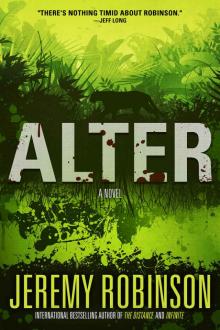 Alter
Alter From Above - A Novella
From Above - A Novella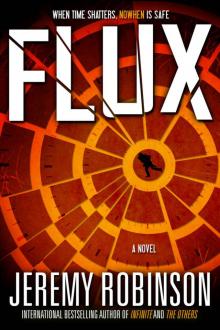 Flux
Flux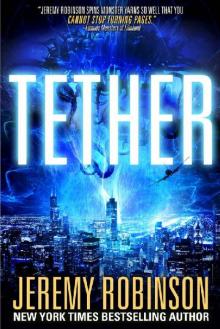 Tether
Tether Exo-Hunter
Exo-Hunter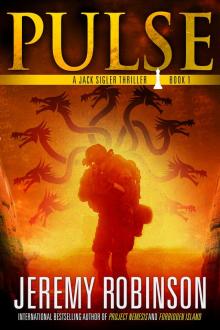 Pulse
Pulse Cannibal
Cannibal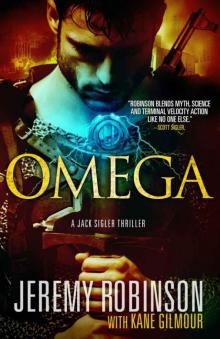 Omega: A Jack Sigler Thriller cta-5
Omega: A Jack Sigler Thriller cta-5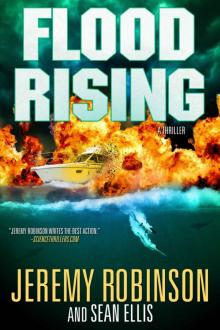 Flood Rising (A Jenna Flood Thriller)
Flood Rising (A Jenna Flood Thriller)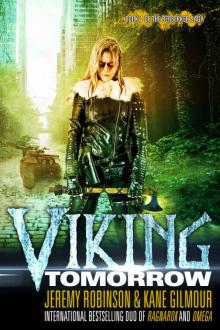 Viking Tomorrow
Viking Tomorrow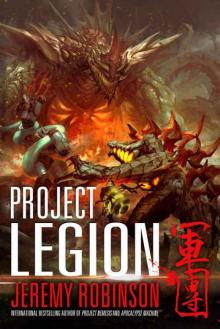 Project Legion (Nemesis Saga Book 5)
Project Legion (Nemesis Saga Book 5)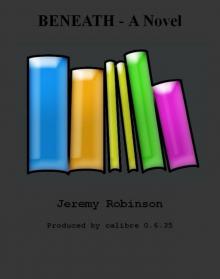 BENEATH - A Novel
BENEATH - A Novel Kronos
Kronos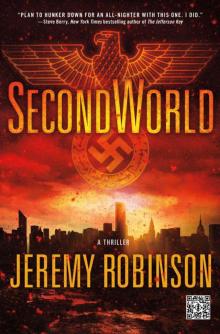 SecondWorld
SecondWorld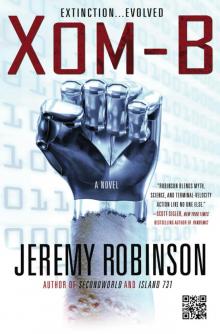 XOM-B
XOM-B Forbidden Island
Forbidden Island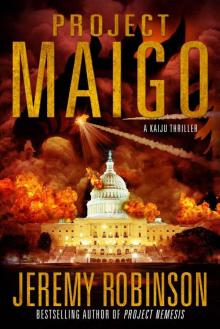 Project Maigo
Project Maigo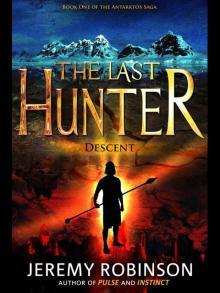 The Last Hunter - Descent (Book 1 of the Antarktos Saga)
The Last Hunter - Descent (Book 1 of the Antarktos Saga)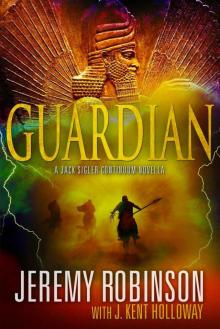 Jack Sigler Continuum 1: Guardian
Jack Sigler Continuum 1: Guardian Infinite
Infinite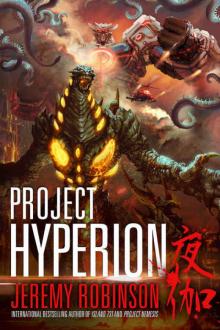 Project Hyperion
Project Hyperion The Distance
The Distance The Divide
The Divide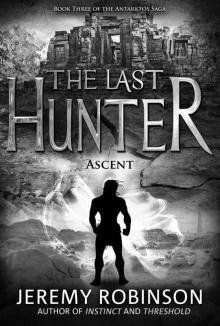 The Last Hunter - Ascent (Book 3 of the Antarktos Saga)
The Last Hunter - Ascent (Book 3 of the Antarktos Saga)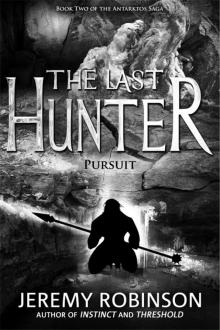 The Last Hunter - Pursuit (Book 2 of the Antarktos Saga)
The Last Hunter - Pursuit (Book 2 of the Antarktos Saga)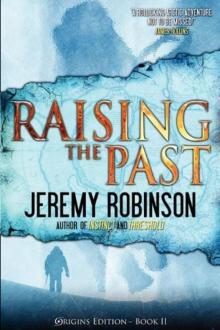 Raising the Past
Raising the Past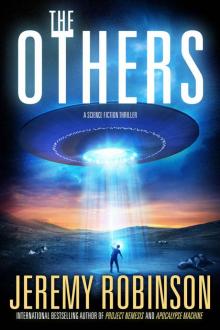 The Others
The Others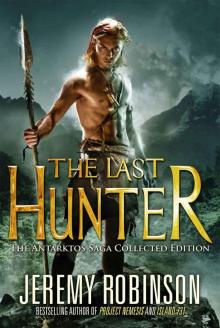 The Last Hunter - Collected Edition
The Last Hunter - Collected Edition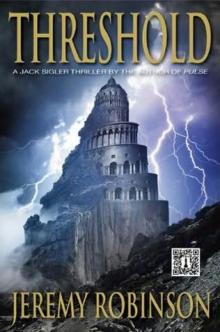 Threshold
Threshold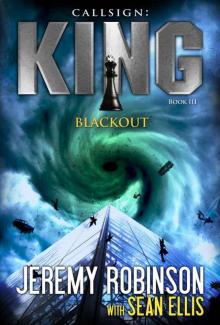 Blackout ck-3
Blackout ck-3 Antarktos Rising
Antarktos Rising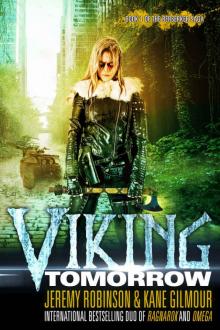 Viking Tomorrow (The Berserker Saga Book 1)
Viking Tomorrow (The Berserker Saga Book 1) The Didymus Contingency
The Didymus Contingency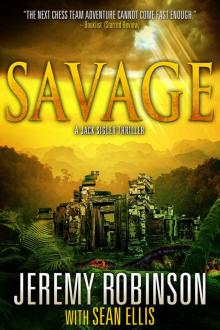 Savage (Jack Sigler / Chess Team)
Savage (Jack Sigler / Chess Team)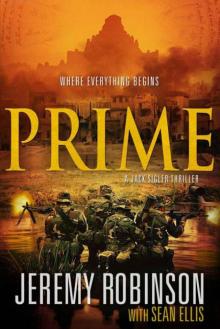 Prime
Prime Insomnia and Seven More Short Stories
Insomnia and Seven More Short Stories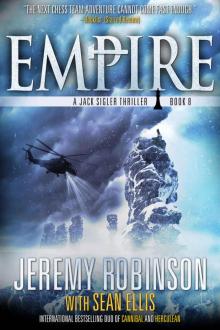 Empire (A Jack Sigler Thriller Book 8)
Empire (A Jack Sigler Thriller Book 8) Unity
Unity Instinct
Instinct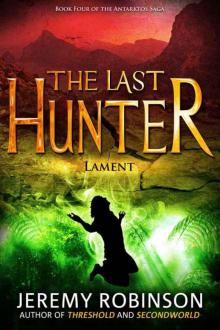 The Last Hunter - Lament (Book 4 of the Antarktos Saga)
The Last Hunter - Lament (Book 4 of the Antarktos Saga) MirrorWorld
MirrorWorld Herculean (Cerberus Group Book 1)
Herculean (Cerberus Group Book 1)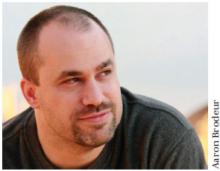 Island 731
Island 731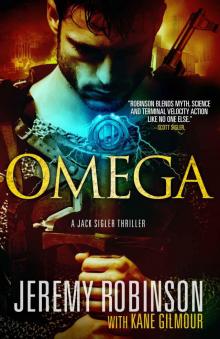 Omega: A Jack Sigler Thriller
Omega: A Jack Sigler Thriller Patriot (A Jack Sigler Continuum Novella)
Patriot (A Jack Sigler Continuum Novella)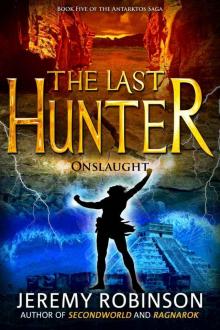 5 Onslaught
5 Onslaught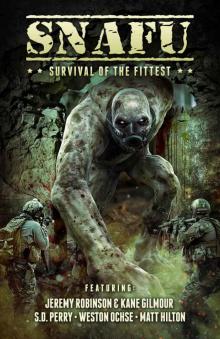 SNAFU: Survival of the Fittest
SNAFU: Survival of the Fittest Helios (Cerberus Group Book 2)
Helios (Cerberus Group Book 2)